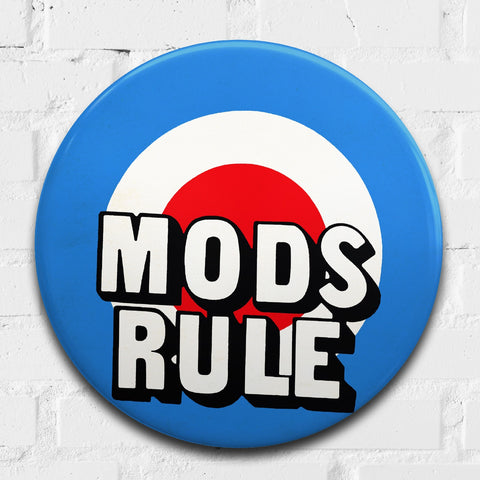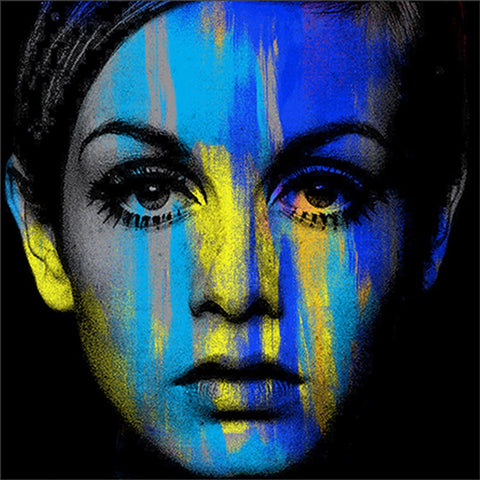Can you hear that distant rumbling? That’s the sound of thousands of Mods gunning up their Lambretta’s and descending on Brighton for 2022’s Mod Weekender this Bank Holiday weekend.
If you fancy celebrating Mod Culture this weekend, head down to Madeira Drive to see Mods out in force, or, if you’re a fan of The Jam, there’s still time to catch This Modern World – the largest exhibition of The Jam and The Style Council memorabilia ever curated, which finishes on Sunday 29th August.
In today’s blog, we’re diving into Mod culture, and providing some examples of artworks that have been influenced by the subculture. Start your engines…
What is Mod culture?
Mod culture originated in London in the 50s, accelerating to its peak in the mid-1960s, before enjoying a revival in the late 70s courtesy of The Jam and hit movie, Quadrophenia.
Originally, the term Mod was used to describe lovers of modern jazz music, but the definition soon spread beyond jazz to include other lifestyle factors, such as slim fit suits, scooters, rhythm and blues, existentialist philosophy, and Pop Art.
Often fuelled by amphetamines, the Mods clashed with another subculture of the time - the Rockers. This feud is widely-considered one of the first ‘style wars’ of the twentieth century, and led to widespread moral panic, fuelled by the media, about the state of modern youth.
In this piece by contemporary artist, Dirty Hans, the vendetta between Mods and Rockers appears to have been put aside for good, as members of both sides meet on Brighton Pier – a location that played host to one of their most notorious brawls.
In Mods and Rockers, Hans includes multiple nods to Mod subculture, including references to The Who, the novel - Brighton Rock and Quadrophenia. If you look closely, you’ll see the chap sporting the green parka jacket even looks suspiciously like The Modfather himself, Paul Weller.
MUSIC
Speaking of Paul Weller, we can’t chat about Mod culture without referencing the music that provided its soundtrack. While its roots are grounded in modern jazz and R&B, the Mods of the 60s were also rather partial to blues, soul (particularly Tamla Motown) and Jamaican ska and bluebeat.
Blasting out of Mod speakers were artists such as The Animals, The Small Faces, The Kinks, The Yardbirds and of course, The Who – whose 1973 rock opera inspired Quadrophenia.
The Who emerged directly out of the Mod movement and showed direct interest in everything Mods stood for, with Pete Townshend famously declaring: “We stand for pop-art clothes, pop-art music, and pop-art behaviour.”
Mod culture enjoyed a revival during the 70s and 80s courtesy of The Jam, and its influence also spilled over into the Britpop genre of the 1990s, with bands like Oasis, Blur and Ocean Colour Scene all inspired by Mod fashion and music.
In Boy About Town British artist, Tape Deck Art, celebrates The Jam.
Mod fashion
The original Mods were the children of garment workers in London, therefore, it should come as no surprise that they were a stylish bunch.
The kids of baby boomers in an affluent post-war Britain, the original Mods had money to burn and were keen to distance themselves from the style of their parents.
Slim fit Italian suits, box-like jackets, parkas and polo shirts were the signature pieces of the day for the chaps, while for the ladies it was all shift dresses, cropped bobs, and the mini-skirts made famous by Mary Quant.
In this piece by Anthony Freeman, the artist depicts supermodel, Twiggy, who along with Dusty Springfield and Cathy McGowan – host of Mod pop music TV show, Ready, Steady, Go! - was often referred to as the ‘Queen of the Mods’.
Of course, the ultimate accessory for any self-respecting Mod was either a Vespa or a Lambretta, which were cheaper than cars and allowed people to zoom between clubs late at night when all public transport had stopped.
INTERESTS
As Pete Townshend said, Mod culture involved a love of Pop Art, and alongside the likes of Eduardo Paolozzi and Richard Hamilton, no artist represents that more than The Godfather of Pop Art, Sir Peter Blake.
Blake designed a number of infamous album covers for The Who, Paul Weller’s Stanley Road, and of course, The Beatles’ Sgt. Pepper's Lonely Hearts Club Band.
In his Motif Suite, available in both small and large, Blake celebrates the target motif associated with the Mod movement.
In honour of Brighton’s 2022 Mod Weekender, we’ve curated this special collection of limited edition art prints in celebration of Mod Culture. Shop the collection here.










